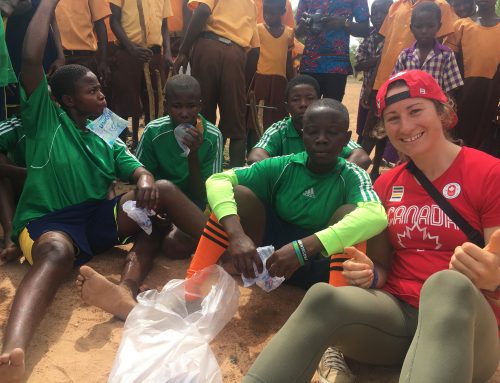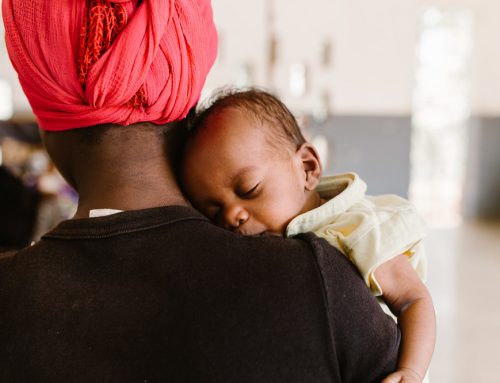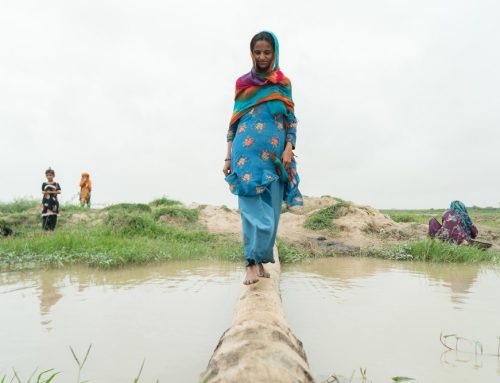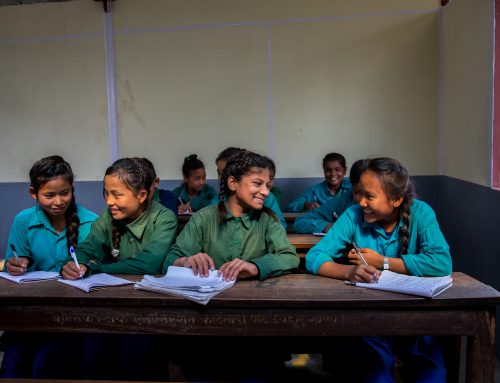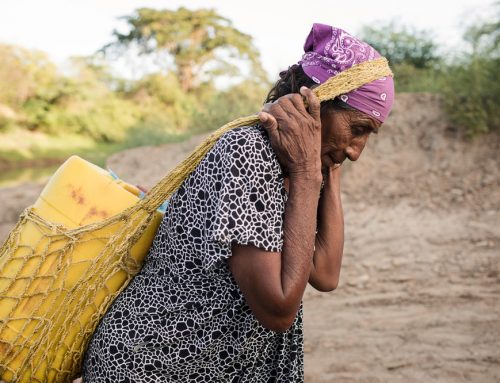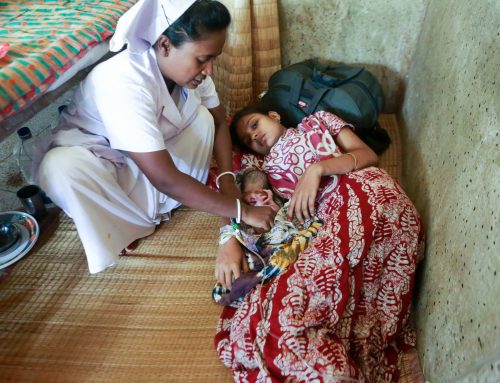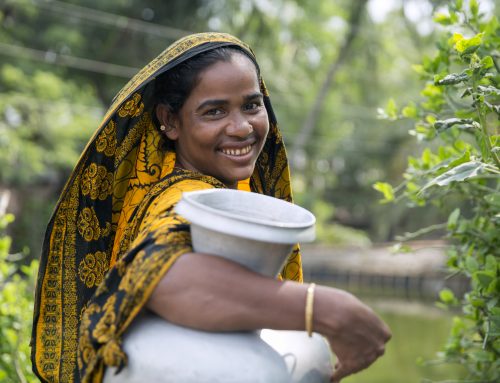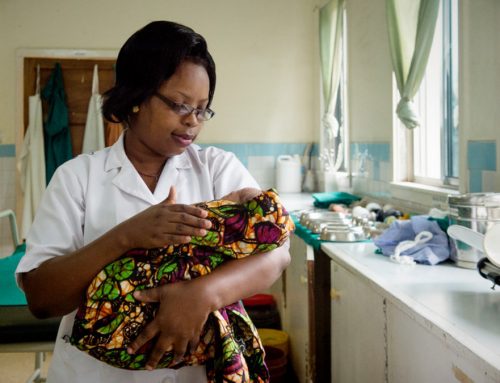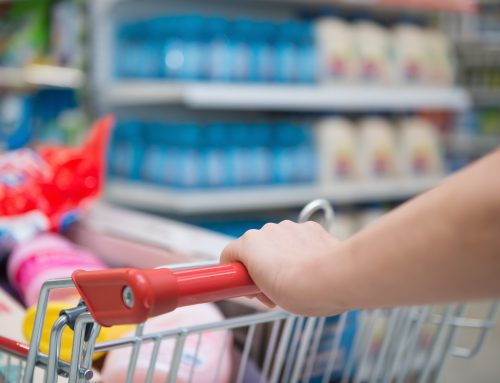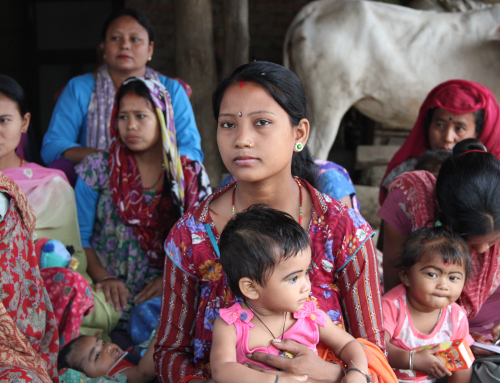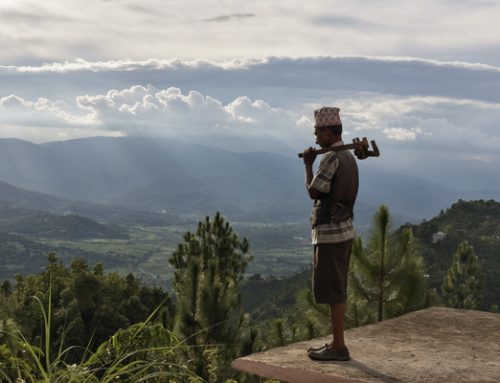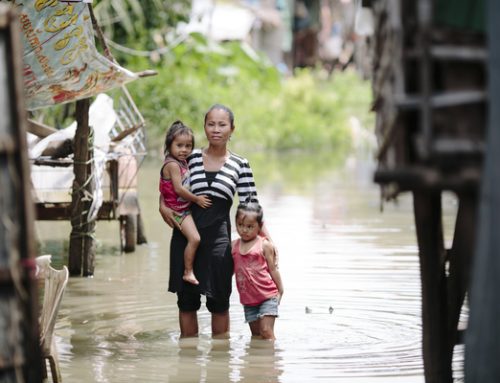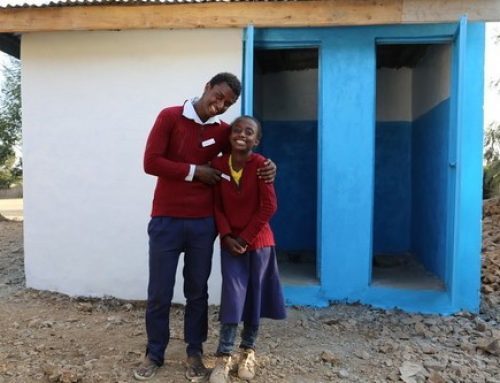Around the world, 155 million children under the age of five are stunted – leaving them with often irreversible cognitive, emotional and physical damage, as a result of undernutrition in their first 1,000 days, from conception to two years old. Estimates suggest that poor sanitation is the second leading cause of stunting worldwide.
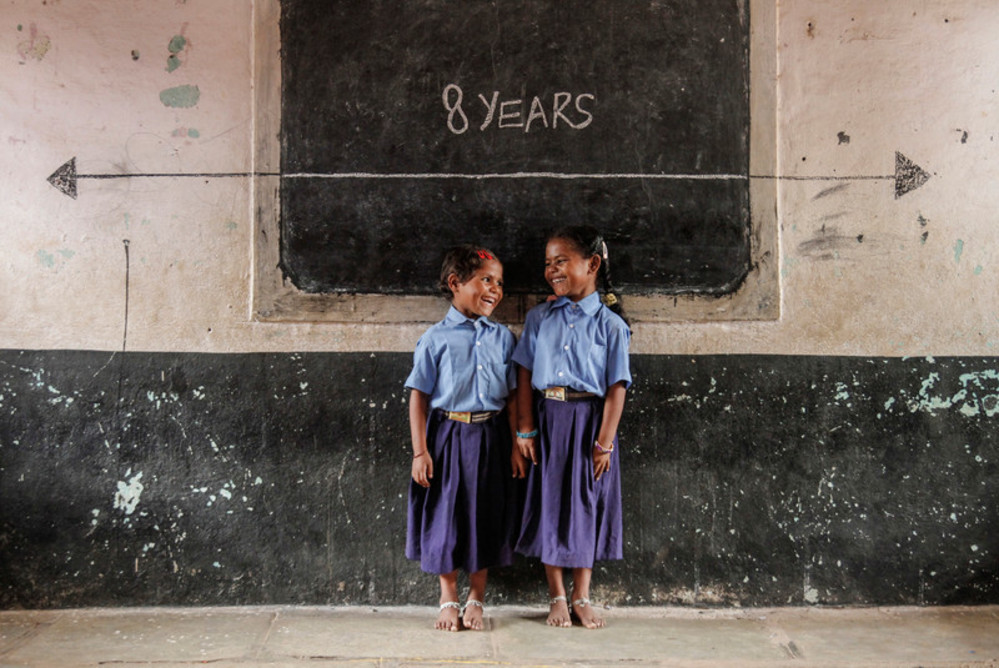
Sisters Manjula, 9, and Gouramma, 13, stand underneath a chalk mark showing the global average height for an eight-year-old at a primary school in India. WaterAid/ Ronny Sen
‘Recipe for success’, a report released today by WaterAid, Action Against Hunger and the SHARE Consortium, reveals how the world can help end malnutrition, by tackling dirty water, lack of toilets and hygiene alongside more traditional nutritional interventions.
The report investigated how well countries are doing at integrating water, sanitation, hygiene and and nutrition policies, and found that while Cambodia and Niger are leading the way in using water and sanitation to improve the health and nutrition of their citizens – many other countries across Asia and Africa still have a long way to go.
As we begin the third year of the Sustainable Development Goals (SDGs), progress is too slow to meet Goal 2 to end all forms of malnutrition. Without integrated approaches bringing together nutrition, water, sanitation and hygiene – supported at both the global level and by national governments – progress will continue to be slow.
Megan Wilson-Jones, WaterAid’s policy analyst on health and hygiene, and one of the report’s authors said:
“The truth is that food alone will never be enough to tackle the problem, we have to target its underlying causes too. Clean water, adequate sanitation and good hygiene are also vital ingredients for good health. We are calling on everyone working to end malnutrition – from Governments to policymakers, practitioners to donors — to integrate water, sanitation and hygiene into nutritional policies and plans without delay.”
The ‘Recipe for success’ report has been released to coincide with World Water Week. It builds on the report, The missing ingredients, published in 2016.
